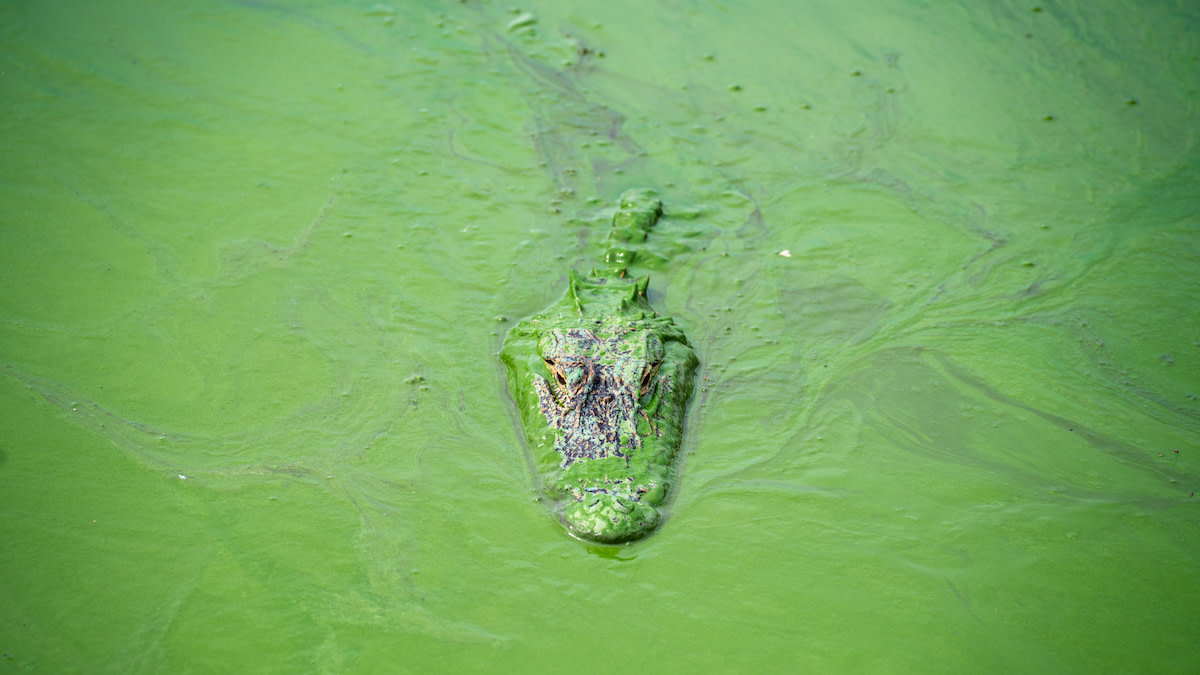
Florida offers arguably some of the best fishing in our nation. However, mismanagement of freshwater has led to toxic algal blooms, seagrass die-offs, and an astounding number of fish kills across the Sunshine State. But after about two decades of discussion, action is finally happening to address this monumental man-made issue.
The red tide is currently plaguing the Tampa Bay area, and this year brings one of the worst cases the Gulf Coast of Florida has seen in over 50 years. It’s also unusual for such an extreme bloom to occur in the middle of summer. Although a large spill from the Piney Point phosphate plant could be fueling this phenomenon, it’s likely not the sole contributor. Officials have cleaned up at least 600 tons of dead fish and marine life this summer—from forage fish to tarpon to manatees. This algae is not picky with what it kills in its suffocating presence.
A Water Fiasco Florida’s water crisis began with good intentions. Over the 20th century, the hydrology of Lake Okeechobee and the surrounding areas was altered by redirecting much of the water that flowed through the Everglades westward through the Caloosahatchee River to Pine Island Sound and eastward through the St. Lucie River to the Indian River Lagoon. The natural, southward flow into Florida Bay was blocked to protect growing communities, infrastructure, and to promote sugarcane agriculture southeast of the lake.
 Current Everglade flows via Everglades Foundation.
Current Everglade flows via Everglades Foundation.
At the time, the redirection of water was viewed as a brilliant feat. Americans transformed a swamp into habitable ground and highly productive farmland. However, the Everglades, starved of freshwater, have been shrinking and dying ever since. About half of the original Everglades are now urban or agricultural areas and much of the rest is drying up or suffering saltwater incursion. Pine Island Sound and the Indian River Lagoon are experiencing the opposite problem (too much freshwater), as billions of gallons of nutrient-laden water are diverted from the lake to the Atlantic Ocean and Gulf of Mexico.
 Historic Everglade flows via Everglades Foundation.
Historic Everglade flows via Everglades Foundation.
Essentially, the Everglades used to act as a giant water filter for freshwater, but now their diminished area is ineffective against the massive amount of fertilizers flowing into the water system. Because of high levels of nutrients that run off into the freshwater from industries like sugarcane agriculture, landscaping, and golf course maintenance, extreme algae blooms are wreaking havoc on both freshwater and saltwater ecosystems. Red tides along the coast result from large blooms of the organism Karenia brevis in saltwater, and blue-green algae, also known as cyanobacteria, emerges in freshwater and becomes a neurotoxin when it hits saltwater.
Although both types of algae are naturally occurring, they have become more common and severe in recent years due to the extreme levels of phosphorus and nitrogen in the water. The blooms are so dense that they eat up all the oxygen, release poisonous gases, and result in mass fish kills. The Florida Department of Environmental Protection provides a live map of blue-green algae blooms which span across the entire state. The Florida Fish and Wildlife Commission keeps an updated map of red tide algae blooms. When algae blooms occur at these toxic levels, they also pose a danger to human health. To learn more about the risks of exposure to algal blooms, check out the CDC website.
What are People Doing About It? Currently, the Army Corps of Engineers is revamping the Lake Okeechobee operating schedule through a process known as the Lake Okeechobee System Operating Manual (LOSOM). The LOSOM process has been underway since 2018 and the Army Corps and South Florida Water Management District undertook an extensive modeling process, investigating thousands of different plans. Ultimately, they narrowed them down to five options.
Captains For Clean Water (CFCW) is a nonprofit organization started in 2016 by fishing guides that had enough with Florida’s poor water management practices devastating estuaries. They believe that “Alternative Plan CC” is the best starting point of the five plans currently offered. Essentially, this plan strives to reroute the current dispersal of water from Lake Okeechobee by tripling the flows heading south to the Everglades, improving dry season flows to the Gulf, and decreasing water headed to the Atlantic. However, Plan CC is not without faults.
“We encourage the Army Corps to act with an utmost sense of urgency to optimize Plan CC. This is where the rubber meets the road,” said Capt. Daniel Andrews, founder of CFCW. “They selected a plan that benefits the most stakeholders, CC, but we need this plan optimized to address the wet season releases to the Caloosahatchee to avoid extra nutrient load to our estuary. Red tide, k. brevis, is not a picky eater and it will feed on any nutrient available. We applaud the Corps’ decision and urge them to further optimize this plan.”
What Can You Do? "As people who love and use these places, it's our responsibility to use our voices to fight for them," Andrews told MeatEater. "This is our chance! Take action and email the Army Corps. Your voice matters and we need it now."
To contribute your voice, write to OkeechobeeWatershedRestoration@usace.army.mil and explain the changes you want to see made to “Plan CC.” If you don’t feel like drafting your own email, there is one already made for you and addressed to three recipients at the Army Corp of Engineers via the Captains for Clean Waters website. It takes less than a minute to fill out your information and send the email.
The final announcement of the preferred alternative plan will be made in early August. The fate of Florida’s fish hangs in the balance.
Feature image via Noah Miller of Captains For Clean Water.





